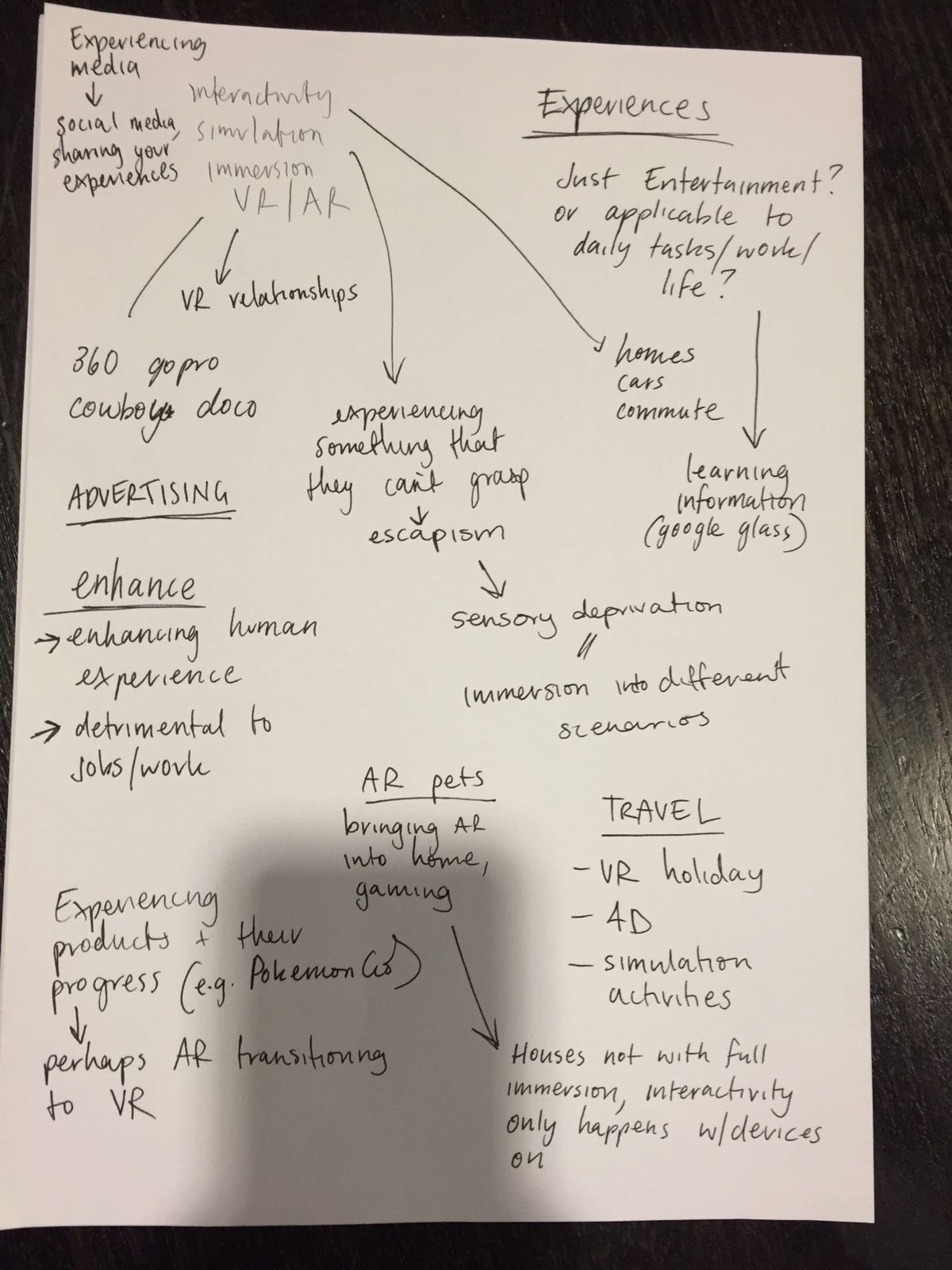Informal annotated bibliography:
McMenemy, Karen & Ferguson, Stuart 2007, A hitchhiker’s guide to virtual reality, AK Peters, Wellesley, MA.
PREFACE – In This Book:
CD has programs for over 30 projects in VR. These range in scope from a tool that simulates virtual sculpting, to a suite of software for the control of a four-projector immersive virtual environment element. What VR fundamentally aims to achieve, to what it can be applied, what elements need to be brought together, how they work and how the theory is turned into practice. We examine the human senses and their significance in delivering a sense of reality within the virtual world. We describe the types of interface technologies that are available and how they work.
Karen McMenemy and Stuart Ferguson’s book A hitchhiker’s guide to virtual reality (2007) is exactly what the title says – hitching a ride to the knowledge of virtual reality. The book explains the human perceptions (senses) and the basic understanding of virtual reality in the first half of the book.
There are list technologies for broad categories such as “visualisation”, “auditory”, “interaction” and “motion tracking”.
The second half are mostly coding chapters on the technologies and computer programming tips for further knowledge of understanding how virtual reality applications are developed. These are more to the programming side of the VR application.
.
Fuchs, Philippe, Moreau, Guillaume & Guitton, Pascal (eds) 2011, Virtual Reality: Concepts and Technologies, English edn, Taylor & Francis Group, London, UK.
CHAPTER 1 – Introduction to Virtual Reality
Philippe Fuchs and Pascal Guitton
This chapter immediately lays out the foundation of virtual reality. What does VR mean and where did it come from? Why would people want virtual reality? Fuchs answers these questions in the first chapter. It was interesting how he claims that virtual reality has been a term that was stuck with us for more than fifteen years.
“In literature, we still find definitions that inappropriately mix the purpose of virtual reality, its functions, applications and the techniques on which it is based. Some have even defined virtual reality merely by the use of one or another interaction device. It is this simplistic image that was unfortunately circulated in the media: A person using a head-mounted display with different controls to interact (data glove, paddle, steering wheel, etc.) that are connected to a computer. – pg. 5”
He raises good examples of how people have different perceptions of virtual reality that sometimes stray from the intended purpose.
“The purpose of virtual reality is to make possible a sensorimotor and cognitive activity for a person (or persons) in a digitally created artificial world, which can be imaginary, symbolic or a simulation of certain aspects of the real world. – pg. 6”
Class Discussion:
VR Therapy – safe environment coming in terms with your fear.
VR Tastes –
Mobile devices are the biggest trend in technology
VR in Hollywood – episodic form because do not overwhelm people
VR as informational
VR senses – visuals and audio has it down. 3 more senses to go!
VR restrictions – like those who have problems with discerning reality and virtual before they have breakdowns.
VR refugee experience – positive effect of virtual reality. brings in the experience to empathise.
How did VR become mainstream?
– immersive
– the digital restrictions overcome / the computational data
Alternative VR
Technology of VR
Psycho Therapy of VR – beneficial to society
Ethics of VR




